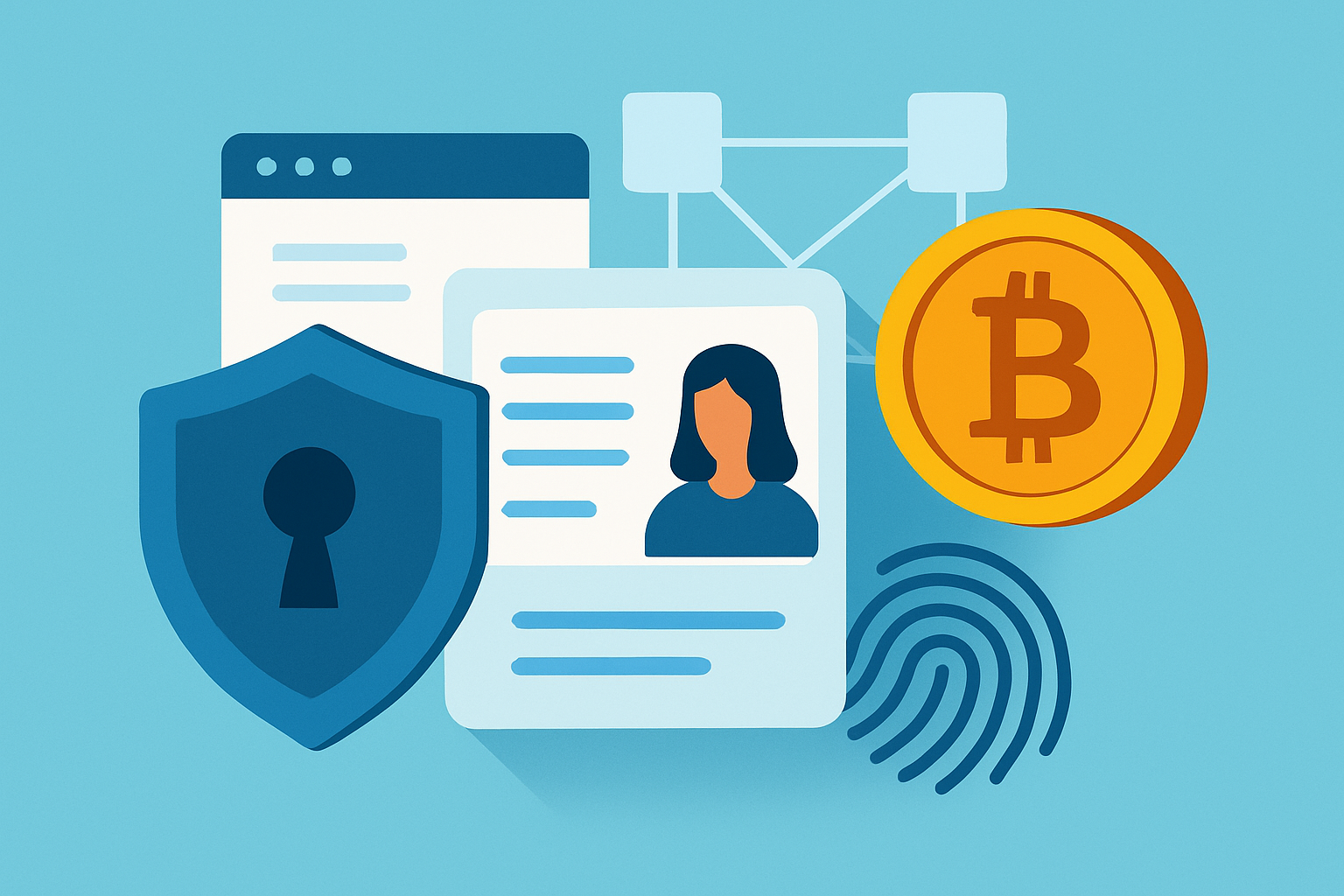Why Know Your Customer Matters for Crypto Compliance


In the fast-paced world of crypto, staying on the right side of regulations isn’t just paperwork—it’s a lifeline for keeping our financial system safe and trustworthy. At the heart of this compliance dance is the Know Your Customer (KYC) process which verifies users’ identities with a fine-toothed comb. KYC acts like a sturdy shield for crypto firms, helping them dodge risks of fraud, money laundering and shady dealings that could exploit the pseudonymous side of cryptocurrencies.
What It Really Means to 'Know Your Customer' (Beyond the Buzzword)
Know Your Customer or KYC is the trusty process that financial institutions and crypto platforms rely on to verify their clients’ identities.
- KYC basically means collecting essential ID details like full name, date of birth and a government-issued ID—just the basics without anything fancy.
- Platforms then do a bit of detective work by checking these details against documents and technology to make sure everything adds up and is not suspicious.
- It does not stop there. There is also ongoing monitoring of transactions to catch any odd or suspicious behavior before it becomes a bigger problem.
- The whole point is to keep fraud and financial crimes at bay while staying on the right side of regulators. It is kind of like keeping your ducks in a row.
Why KYC Matters in Cryptocurrency
Cryptocurrency’s decentralized and pseudonymous nature means transactions rarely spill the beans about who is behind them. While this definitely helps keep things private, it also opens the door to a fair share of misuse. That’s where KYC processes come in handy—they help crypto businesses stay on the right side of laws worldwide and curb shady activities by linking transactions to verified identities.
- KYC plays a important role in stopping money laundering and terrorism financing by keeping shady characters from using crypto platforms.
- It helps businesses comply with regulations and avoid hefty fines or being forced to shut down.
- Verifying users isn’t just a formality; it builds genuine trust between platform users and investors.
- KYC lowers the risk of scams and fraud that often target cryptocurrency communities.

Understanding How KYC Operates on Crypto Platforms
Diving into the world of crypto, it’s important to get a handle on how KYC—short for Know Your Customer—actually works behind the scenes on these platforms. It’s one of those things that might feel like a bit of a necessary hoop to jump through, but trust me, it’s there for good reasons. From verifying your identity to keeping the bad actors at bay, KYC processes are the unsung heroes that help keep the crypto space a bit safer and more trustworthy. Let’s unravel how these procedures fit into the bigger picture of crypto trading and security.
Crypto exchanges and platforms usually have a multi-step KYC process that kicks off as soon as users sign up and keeps rolling along as they continue using the service. This journey typically involves gathering a fair bit of data, verifying identities through a mix of clever technologies.
Users kick things off by registering and sharing some personal details like their name and address plus date of birth—nothing too complicated just the essentials.
They upload official documents such as passports or driver’s licenses to prove they are who they say they are—straightforward but important.
Platforms usually rely on a mix of automated systems and occasional human checks to make sure all the info checks out and isn’t pulling a fast one.
Once verified, accounts get either the green light, put on hold for a closer look or sometimes turned down—no guessing games here.
Ongoing monitoring keeps a watchful eye on transaction patterns to quickly catch anything out of the ordinary before it becomes a problem.
Common Ways KYC Is Done and the Technologies Used in Crypto A Quick Dive into the Nuts and Bolts
Today’s crypto platforms lean on a clever mix of tools to tackle KYC in a way that’s both slick and secure. They often turn to biometric checks to make sure you are who you say you are. They also use AI-based systems that can sniff out fake documents faster than you can blink and run database scans to catch anyone lurking on watchlists or sanctions lists.
| KYC Method | What It Verifies | How It Works | Pros | Cons |
|---|---|---|---|---|
| Document Verification | Identity documents like ID or passport | Relies on automated OCR and smart AI to see if documents are the real deal | Quick to implement and easy to scale | Can be fooled by some really convincing fakes |
| Biometric Verification | User’s physical traits | Uses facial recognition or fingerprint scans to confirm who is who | Tough to fake and delivers solid security | Raises privacy concerns and often requires special hardware |
| Database Screening | Watchlists, sanctions lists, politically exposed persons (PEPs) | Cross-checks user info against global watchlists and databases | Helps tick the legal boxes | Occasionally throws false alarms on legit users |
| Manual Review | Complex or flagged cases | Skilled experts take a close look at documents or data | Super accurate when things get tricky | Can be slow and expensive |
| AI and Machine Learning | Detects unusual transaction behavior | Algorithms analyze user behavior patterns | Great at catching fraud early on | Effectiveness relies heavily on good data and fine tuning |
The Not-So-Smooth Journey
KYC plays a key role in meeting compliance requirements but also comes with criticism and practical hurdles that can’t be ignored. Privacy advocates frequently voice concerns over how sensitive user data is handled and safeguarded, which is understandable. Users often find themselves stuck in onboarding limbo or uncomfortable handing over personal details.
- Sharing sensitive personal information with platforms isn’t without its privacy pitfalls, so it’s wise to tread carefully.
- KYC processes can sometimes slow things down or bring another level of friction, which might make new users think twice before signing up.
- The risks of data breaches are real and quite serious if platforms don’t do a solid job protecting user info.
- Many users find KYC requirements to be a bit of a headache—often complex and feeling rather intrusive.
- With regulations differing from one country to another, global platforms face a tricky challenge trying to apply KYC in a consistent way.
Key Practices for Successful KYC Compliance in Crypto That Actually Work
Crypto businesses can strike a solid balance by leaning on technology-driven KYC solutions, staying ahead of the regulatory curve and being upfront with users about how their data is handled and safeguarded.
- Opt for strong and reliable identity verification tools to speed things up while keeping security tight.
- Stay updated on local and international KYC and AML regulations to avoid penalties.
- Be upfront and clear with users about why KYC matters and how their data stays secure.
- Use solid data protection methods like encryption and secure storage to prevent breaches.
- Design KYC processes that balance thoroughness and simplicity to make the experience smoother and reduce dropout rates.
Where KYC Is Really Heading in the Ever-Shifting World of Crypto
Emerging trends like decentralized identity (DID) frameworks and zero-knowledge proofs along with advanced AI look poised to make know your customer processes more privacy-friendly and efficient. Meanwhile, regulatory frameworks are slowly catching up and adapting to the unique nature of blockchain.
Innovative identity verification methods like zero-knowledge proofs are really changing the game, letting crypto platforms tick all the regulatory boxes without tossing user privacy out the window. It’s a clever way to capture the true spirit of decentralization while still keeping security tight — the best of both worlds if you ask me.






